What to do about multidrug-resistant gonorrhea
Gonorrhea, caused by the bacterium Neisseria gonorrhoeae, continues to be a major U.S. public health problem in terms of its prevalence as well as the lack of effective treatments available.
“Gonorrhea is the second most commonly reported notifiable infection in the United States; >300,000 cases were reported in 2011,” according to the Centers for Disease Control and Prevention (CDC) Grand Rounds published in the Feb. 15 Morbidity and Mortality Weekly Report (MMWR). “In the United States, health inequities persist; the incidence of reported gonorrhea among blacks is 17 times the rate among whites, likely because of structural socioeconomic factors.”
Ongoing surveillance of gonococcal antimicrobial resistance has been undertaken by the CDC since 1986, with the introduction of the Gonococcal Isolate Surveillance System (GISP). This system monitors gonococcal antimicrobial susceptibility from urethal N. gonorrhoeae isolates that have been collected from men at STD clinics. These results help to form gonorrhea treatment recommendations before a major public health problem develops, according to the article.
Multidrug-resistant gonorrhea is a growing problem, however, that the CDC acknowledges with the evidence that cephalosporin resistance may be emerging in the United States, according to the report. Cephalosporins (such as cefiximine and ceftriaxone) have remained the foundation of treatment since the 2010 CDC STD treatment guidelines.
“Cefiximine minimum inhibitory concentrations (MICs) recently increased, suggesting that the effectiveness of cefixime might be threatened,” the authors said. “The percentage of isolates with elevated cefixime MICs (≥0.25 µg/mL) increased from 0.1% in 2006 to 1.4% in 2011.”
The populations with higher increases in isolates were seen from men in the western United States and from men who have sex with men, the region and population where fluoroquinolone-resistant N. gonorrhoeae was first seen.
In 2011, approximately 12% of the isolates could no longer be treated with penicillin, about 23% could not be treated with tetracycline, and 13% were resistant to fluoroquinolones. With the development of cephalosporin resistance to the bacterium, treatment of gonorrhea has become much more complicated.
CDC recently updated its recommended treatment of gonorrhea to a single dose of 250 mg intramuscular ceftriaxone at any anatomic site, which should then be followed with either one single dose of 1 g of azithromycin or 100 mg of doxycycline orally twice daily for 7 days. CDC also offers two alternative treatments for urogenital and rectal gonorrhea:
1) Cefixime 400 mg as a single oral dose and either azithromycin 1g as a single oral dose or the doxycycline regimen above.
2) If the patient is allergic to cephalosporins, a single oral dose of azithromycin 2 g can be taken. Patients must return in a week to be tested for a cure, the authors noted.
At the moment, only one new antimicrobial is being tested in a clinical study for the potential treatment of gonorrhea. The National Institutes of Health has provided funding for more than 130 research grants on gonorrhea, including research to identify other targets for antimicrobial development. Unfortunately, a vaccine has not yet been developed, but research is in the works.
You May Also Be Interested In…
Study raises concerns over cefixime failure rate for gonorrhea













